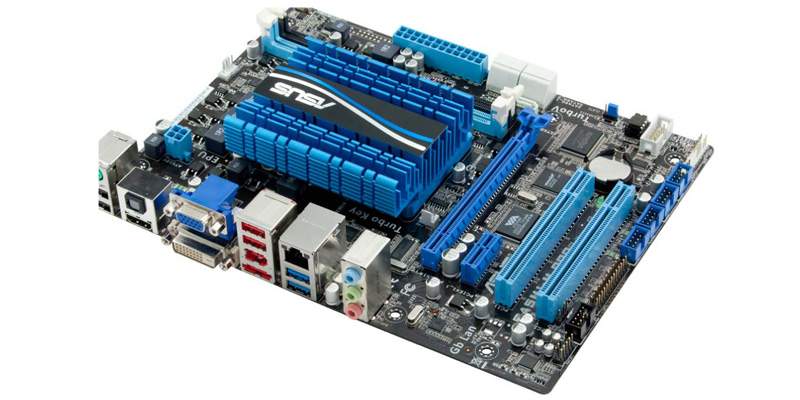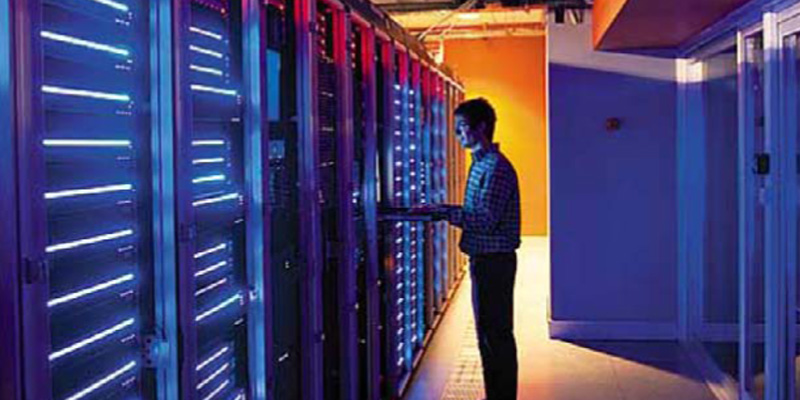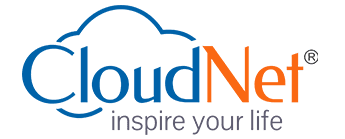- (5.0 Star)
Hardware Network Engineer
Certification Training
We provide Online Instructor And Classroom Instructor led Live virtual classroom by certified trainers/ industry professionals
- Get Up to 35% discount
About Course
CloudNet Certified Hardware Network Engineer is a Certification Hardware Networking Course, design to equip fresher student with today’s best technology solutions to know about Core Hardware, Operating System, Networking and Data Security to manage most common devices including Desktop, Laptop, Printer, Routers and Switches. This course aimed to develop fresher student into industry ready professional. This program is designed by expert professional based on rising competition and increasing challenge in today’s industry. This a best Hardware and Networking course covers today’s topmost Global IT Certification including Fundamental of Computer, Hardware – A+, Networking – N+ and CCNA – Routing & Switching. Its practical knowledge and skill based solution for SOHO and enterprise, on successfully completion of the program our student can land prestigious job as a Desktop Support Engineer, Help Desk Support Engineer, Hardware Network Engineer, Network Engineer and So on.
Key Features
You will get 100% job Assurance and life time e-placement support
classed taken by globally certified trainers
You will get 3 year Dedicated placement support
Courses are globally recognized & accredited

Course Type:
Certification Training
Live virtual classroom:
37,000/- Per Module
48,000/-
Regular classroom:
37,000/- Per Module
48,000/-
- Duration:
9 Months
- Enrolled:
80 Learners
- Eligibility:
10 / 10+2 / Graduate
- 5 Star:
15 Reviews
MODULE - I
The Computer Hardware A+ course is the first step of your professional IT Career. IT’s the ideal foundation course to get started on a career working with Computer Hardware, Operating System, Data Security, and Basic Networking on Desktop, Laptop, Tablets, Mobile device and many more. This course provide strong foundation on Core Hardware, Operating System (Windows, Linux, Apple and Android Platform), Printer, Security issue and Essential Networking installation, configuration, maintenance & computer assembling. This course is design based on latest industry trend to build a successful career to become an IT Support Engineer, Desktop Support Engineer, Computer Hardware Engineer, Help Desk Support Engineer etc.

Duration : 80 Hrs. Eligibility : Fresher 10th/10+2/Graduate
INTRODUCTION TO PC
- Computer Hardware and Software
- PC Components and Peripheral
- Input, Output and Processing Devices
UNDERSTANDING NUMBER SYSTEM
- Binary, Decimal, Hexadecimal and Octal
UNDERSTANDING LOGIC GATES
- Digital Signal, Electronics Components
- Circuit and Logic Gates
POWER SUPPLY
- SMPS and UPS
UNDERSTANDING MOTHERBOARD
- Motherboard Components and Form Factor (sizes)
- Busses, Expansion Slots and Chipsets
UNDERSTANDING BIOS
- BIOS vs CMOS
- BIOS Components and BIOS Configuration
- Flashing BIOS, UEFI
UNDERSTANDING MEMORY
- Memory Classification
- Volatile vs Non-Volatile
- Types of RAM and ROM
UNDERSTANDING CPU
- 32 bit vs 64 bit, CPU Cores and CPU Cache
- Hyper-Threading and Virtualization Support
- CPU Cooling System
COMPARING STORAGE DEVICES
- Hard Disk Components
- Type of Hard Drive
- IDE, EIDE, ATA, PATA, SATA, SCSI and SSD
- Hard Disk Cables and Connectors
- Optical Discs and Drive
- CD, DVD, Blue-ray
EXPLORING PERIPHERALS AND EXPANSION
- Peripherals and Device Drivers
- Input and Output Devices
- Expansion Cards
EXPLORING VIDEO AND DISPLAY DEVICES
- Display Devices – CRT, LCD and LED
- Connector Types – VGA, HDMI and DVI
EXPLORING PRINTERS
- Type of Printers – Inkjet, Thermal, Impact and Laser
- Printers Components
- Print Spooler
WORKING WITH LAPTOP
- Common Laptop Feature
- Conserving Power
- Laptop Hardware Component
UNDERSTANDING MOBILE DEVICES
- Tablets vs. Laptops, Accelerometers and Gyroscopes
- Comparing Operating Systems and Connectivity
WORKING WITH CUSTOMERS
- Communication and Professionalism
- Identify the Problem and Customer Needs
- Workstation Design
INTRODUCING WINDOWS OPERATING SYSTEMS
- Comparing 32bit vs 64 bit
- Windows Versions and Editions
INSTALL AND UPDATING WINDOWS OPERATING SYSTEMS
- Clean Install, Dual Boot, Upgrade and Migrate
USING WINDOWS OPERATING SYSTEMS
- Exploring Windows Features and Management Tools
USING COMMAND PROMPT
- Internal and External Commands Line
- Creating Batch file
CONFIGURING WINDOWS OPERATING SYSTEMS
- Device Manager
- System Protection and System Restore
- Backup and Restore
UNDERSTANDING DISK AND FILE SYSTEM
- Disk, Partition and Volume
- Static Disk vs Dynamic Disk
- Dynamic Disk and RAID
- File System – FAT, NTFS and CDFS
- Disk Management Tools
TROUBLESHOOTING WINDOWS OPERATING SYSTEM
- The Boot Process and Advance Boot Option
- Windows Troubleshooting Tools
INTRODUCING NETWORKING COMPONENTS
- Type of Network – LAN, CAN, MAN and WAN
- Network Hardware Components – NIC, HUB
- Bridge, Switch, Router, Modem
- Workgroup vs. Domain
- Internet Connection
EXPLORING CABLES AND CONNECTIVITY
- Network Cables – Coaxial, Copper and Fiber Optic
- Connector – RJ45, RJ11, BNC
- Network Topology
UNDERSTANDING PROTOCOLS
- Common TCP/IP Protocols and Ports
- COMPARING IPV4 AND IPV6
- IPv4 Classes, Private vs. Public
- Unicast, Multicast and Broadcast
- IPv6
NETWORK SECURITY DEVICES
- Firewall, DMZ, Port Forwarding
- Proxy Server and QoS
- EXPLORING WIRELESS NETWORKING
- Access Point and Wireless Router
- Configure Wireless
CONNECTING AND TROUBLESHOOTING A NETWORK
- Installing and Configuring Network
- Troubleshooting Tools
UNDERSTANDING IT SECURITY
- User and Group
- Local vs. Administrator Users
- Authentication and Authorization
- NTFS security and Local Security Policy
- Bit Locker and Parental Control
RECOGNIZING MALWARE AND OTHER THREATS
- Malwarv, Virus, Warms and Spyware
- Antivirus Software
The Network+ certification is an entry level certification for those who are looking to get started in the field of computer networking and launch their networking career. Network+ program is designed to cover a variety of networking topics including network fundamentals, network operation, network security and network troubleshooting. So many vendor specific network certification is available in the industry but network+ is unique because its vendor neutral.
If you wish to learn networking skill in Kolkata we are one of best training institution to offer
Network+ course in Kolkata and it’s designed by experts as per certification course objectives. We offer this course to learn with a subject expert trainer who has mastery in the field of networking with vast networking experience.
Networking N+ is the prerequisite or recommended for higher level networking certification such CCNA, MCSE, RHCE, CEH, Cloud Computing and many more. Successfully completion of Networking N+ you act as a Network Technician, LAN Installer and Network Support Engineer.

Duration: 50 Hrs. Eligibility: 10th/10+2/Graduate with Basics Computer Skills
Lesson 1: Networking Models
- An Overview of CompTIA N10-008 Network+.
This lesson introduces how the network system works. The OSI and TCP/IP (DoD) models are explained in details to each layers job role and Functions
Lesson 2: Network Components
The Components used to build a network begin with switches and routers, but nowadays are quickly enhanced with the use of wireless networking, Network load distribution, security devices, and many more components. In This lesson we discuss foundational concepts of the most common network components used in today’s modern network.
Lesson 3: Network Topologies
If you are building a new network or with an existing network you will need to understand the advantages and disadvantages of common network designs. This lesson teaches both physical wiring topologies as well as logical topology using modern networks.
Lesson 4: Network Services
- To work with any networks including remote networks you must understand the concept of different network protocols. In this lesson, we explore many common communication protocols including network, transport and application layer protocols to begin the journey of TCP/IP Networks protocols suite.
Lesson 5: LAN Technologies
- The Local Area Network is the backbone of any network. In this lesson we will learn ethernet LAN standard, duplexing and media components.
Lesson 6: WAN Technologies
- If you wish to connect to two remote sites the WAN technologies are key components and responsible for providing long distance communications. In this module, we explore technologies leveraged by service providers (ISP), which provide wide area connectivity.
Lesson 7: Network Cabling and Connectors
- To implement wired based LAN we need to have the proper cabling and supporting adapter. In this Lesson, we explore different types of network cabling and their advantages and disadvantages of cabling types and also discuss the tools required for cabling.
Lesson 8: Ethernet Switch Operations
- Switching is one of the most important topics we understand to build a network. In this section, we discuss how a switch works and perform operations including loop prevention mechanisms. After building a basic concept, we explore advanced tuning options that you might be able to perform to enhance the speed up and reliability of your network.
Lesson 9: Wireless LAN
- Wireless networking has become more famous in the current age. Wireless devices are used to extend the edge to user devices as well as perform bridging between separate physical locations. Lesson 8 discusses wireless communication standards, antenna types, security implementations, and more.
Lesson 10: IP Addressing
- IP addressing is the core component of networking. In this lesson, we discover the importance and use case of the IP Address and subnet mask. After learning the basics of IP address type, class and subnet mask, later we discuss how to create custom subnets to enhance security, improve performance, and aid in administrative needs.
Lesson 11: IP Version 6 Networks
- IPv6 was created to be the successor of IPv4. In this lesson, you learn the need of IPv6 addresses and how IPv6 addressing works, IPv6 address types and how the protocol header is a bit different than in IPv4, and the new roles of ICMPv6.
Lesson 12: IP Routing
- IP Routing is a process to build a routing table, IP Packets are forwarded based on their destination IP addresses matches in the route table, this forwarding called ip routing. We can build a route table through both static and dynamic routing. We must understand and explore Interior Gateway Protocols (IGP), as well as Exterior Gateway Protocols (EGP).
Lesson 13: Unified Communications Fundamentals
- What is Unified communications, Basics of QoS and classification and marking, congestion management, traffic shaping and policing and so on.
Lesson 14: Virtualization Fundamentals
- Virtualization technology is nowadays becoming more famous and every network engineer has to be involved with it. With the rapid adoption of virtualization networks and servers, engineers are now required to understand how virtualized networks work. We learn the basics of virtualization technologies, type of virtualization and the networking aspects of virtualized environments.
Lesson 15: Cloud Fundamentals
- The term cloud computing is used everywhere these days, even by those who have no idea what it means. In This Lesson We will discuss cloud computing models, type of cloud and services.
Lesson 16: Network Security
- Nowadays profit-driven cyber attacks are on the rise, its very necessary that network engineers understand different types of attack methods and security controls tools that can be used to protect network infrastructure. In this lesson we introduce offensive techniques used by attackers, as well as defensive countermeasures that can be deployed by network administrators.
Lesson 17: Network Troubleshooting
In this lesson we learn how to troubleshoot a network and steps to follow to identify the problem including design error, connectivity and hardware and software troubleshooting. We also learn tools mostly used to troubleshoot networks.
New CCNA 2020 (CCNA 200-301) program design to prepare you for today’s associate-level job roles in IT technologies. The New CCNA 2020 is now cover broad aspect of IT job role includes Routing, Switching, IP Services, Security, Automation and Programmability. The program has one certification that covers a broad range of fundamentals for IT careers, with one exam and one training course to help you prepare.
The newly CCNA training course in Kolkata and exam preparation give you the foundation you need to take your career in any direction. CCNA certification training in Kolkata covers a breadth of topics, including:
- Network fundamentals
- Network access
- IP connectivity
- IP services
- Security fundamentals
- Automation and programmability
COURSE KEY HIGHLIGHT:
- You will prepare based on newly designed CCNA 2020 (CCNA 200-301)
- CCNA Training in Kolkata will also come with great job opportunity
- CCNA course at CloudNet, will assure you 100% quality learning experience.
- CCNA Certification course in Kolkata conducted by Highly Experienced and Certified Trainer.
- Successfully completion of course you will earn a course completion certificate
- After completion of CCNA Training at CloudNet you will get 3 years dedicated placement support.
- Our CCNA 2020 program come with life time eLearning and placement Support

Duration : 70 Hrs. Eligibility : 10th/10+2/GraduatewithFundamental Networking Skill
- Explain the role and function of network components
- Describe characteristics of network topology architectures
- Compare physical interface and cabling types
- Identify interface and cable issues (collisions, errors, mismatch duplex, and/or speed)
- Compare TCP to UDP
- Configure and verify IPv4 addressing and subnetting
- Describe the need for private IPv4 addressing
- Configure and verify IPv6 addressing and prefix
- Compare IPv6 address types
- Verify IP parameters for Client OS (Windows, Mac OS, Linux)
Describe wireless principles - Explain virtualization fundamentals (virtual machines)
- Describe switching concepts
- Configure and verify VLANs (normal range) spanning multiple switches
- Configure and verify interswitch connectivity
- Configure and verify Layer 2 discovery protocols (Cisco Discovery Protocol and LLDP)
- Configure and verify (Layer 2/Layer 3) EtherChannel (LACP)
- Describe the need for and basic operations of Rapid PVST+ Spanning Tree
- Protocol and identify basic operations
- Compare Cisco Wireless Architectures and AP modes
- Describe physical infrastructure connections of WLAN components (AP, WLC, access/trunk ports, and LAG)
- Describe AP and WLC management access connections (Telnet, SSH, HTTP, HTTPS, console, and TACACS+/RADIUS)
- Configure the components of a wireless LAN access for client connectivity using GUI only such as WLAN creation, security settings, QoS profiles, and advanced WLAN settings
- Interpret the components of routing table
- Determine how a router makes a forwarding decision by default
- Configure and verify IPv4 and IPv6 static routing
- Configure and verify single area OSPFv2
- Describe the purpose of first hop redundancy protocol
- Configure and verify inside source NAT using static and pools
- Configure and verify NTP operating in a client and server mode
- Explain the role of DHCP and DNS within the network
- Explain the function of SNMP in network operations
- Describe the use of syslog features including facilities and levels
- Configure and verify DHCP client and relay
- Explain the forwarding per-hop behavior (PHB) for QoS such as classification, marking, queuing, congestion, policing, shaping
- Configure network devices for remote access using SSH
- Describe the capabilities and function of TFTP/FTP in the network
- Configure and verify device-monitoring protocols
- Troubleshoot network connectivity issues using ICMP echo-based IP SLA
- Configure and verify device management
- Configure and verify initial device configuration
- Perform device maintenance
- Use Cisco IOS tools to troubleshoot and resolve problems
- Describe network programmability in enterprise network architecture
SECURITY AUTOMATION AND PROGRAMMABILITY
- Explain how automation impacts network management
- Compare traditional networks with controller-based networking
- Describe controller-based and software defined architectures (overlay, underlay, and fabric)
a Separation of control plane and data plane
b North-bound and south-bound APIs - Compare traditional campus device management with Cisco DNA Center enabled device management
- Describe characteristics of REST-based APIs (CRUD, HTTP verbs, and data encoding)
- Recognize the capabilities of configuration management mechanisms Puppet, Chef, and Ansible
- Interpret JSON encoded data
Sent Us a Message



